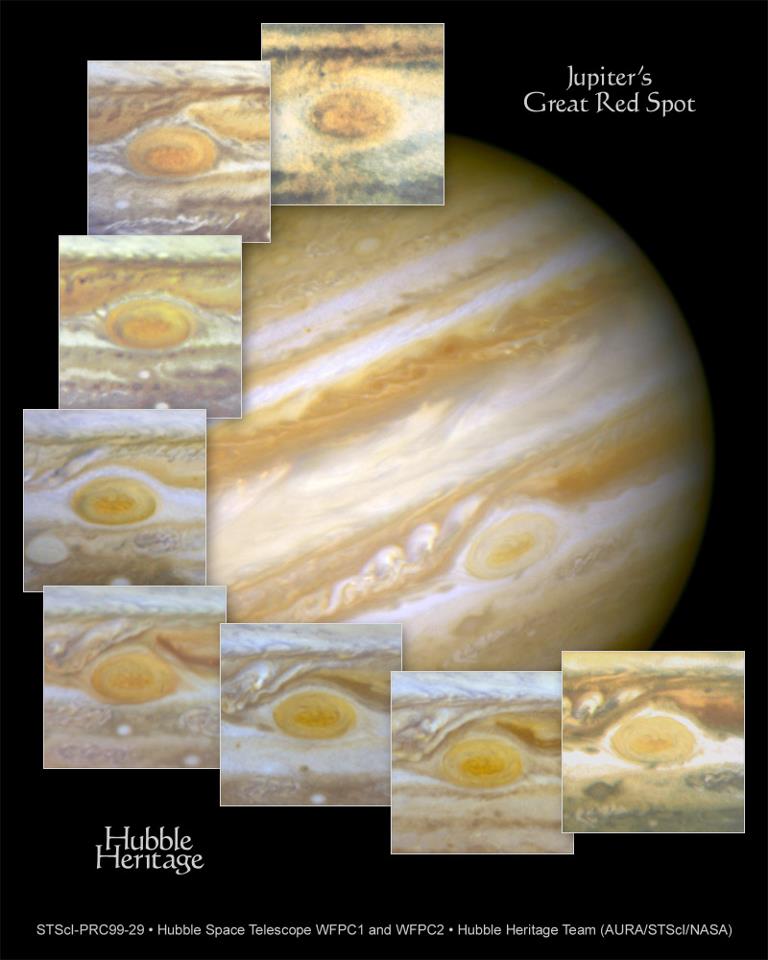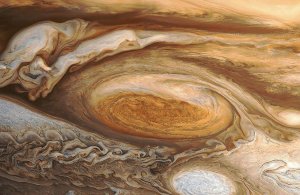

We have all seen and heard of it. Jupiter’s Great Red Spot is one of the planets primary distinguishing features. It’s surprising to learn that, although its terrifying, the Great Red Spot is simply a massive vortex of swirling gases.
How massive? It’s about 20,000 km in length and 14,000 km wide (about 8,000 by 12,400 miles). Put simply, it’s large enough to engulf somewhere between 2-3 entire Earths. Now that’s big. While size does matter, it’s not the only significant feature of this monster. The howling winds, loud thunder, and blinding lighting only add to its reputation.

The winds within the Great Red Spot can approach nearly 640kmh (400 mph). For comparison, the highest wind speed of a hurricane on Earth is believed to be 322 km/h (200 mph) from hurricane Camille. So a storm like Jupiter’s would be classified as a Category 20 hurricane…keep in mind that our current scale only extends to 5 classes. An even scarier aspect of the storm is its duration. It has been about 350 years since the spot was discovered, and it’s still roaring on today. While it’s impossible to tell the exact age of the storm, astronomers speculate that it has been thundering along for many, many centuries.
So what exactly keeps the storm alive? Similar to Earth, the system is fueled by two opposing jet streams. Between the two streams, “pockets” of air can get trapped and start swirling. The Great Red Spot is an example of swirling that’s simply out of control. Additionally, storms on Earth die out quickly once they make landfall. Since Jupiter is a completely gaseous planet, land isn’t an impeding factor.
However, it’s possible that this giant may not last forever. In the past 100 years, the storm has nearly halved in size, and it continues to shrink. We still do not understand much about the Great Red Spot, but astronomers hope that future probes can shed some more light on this beast.